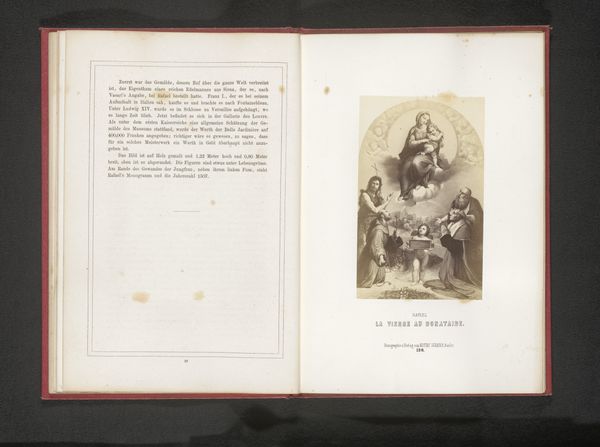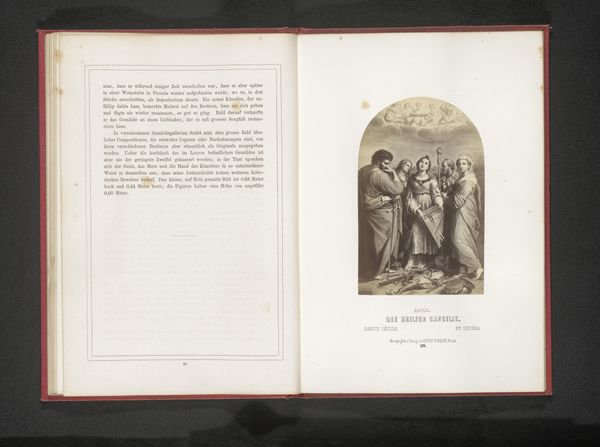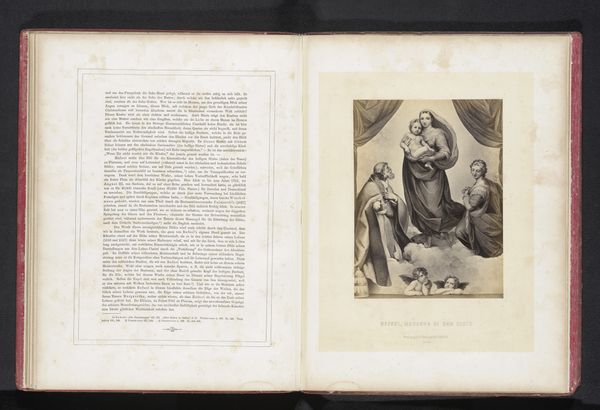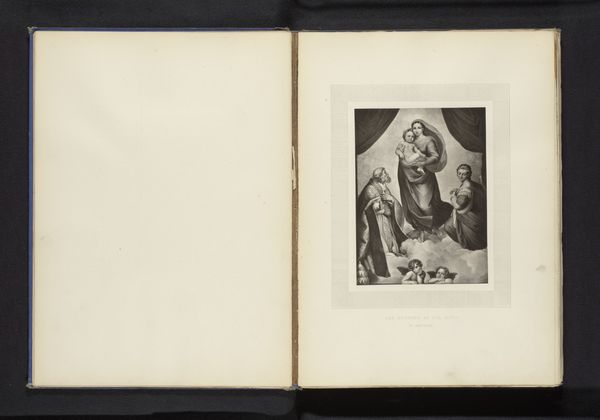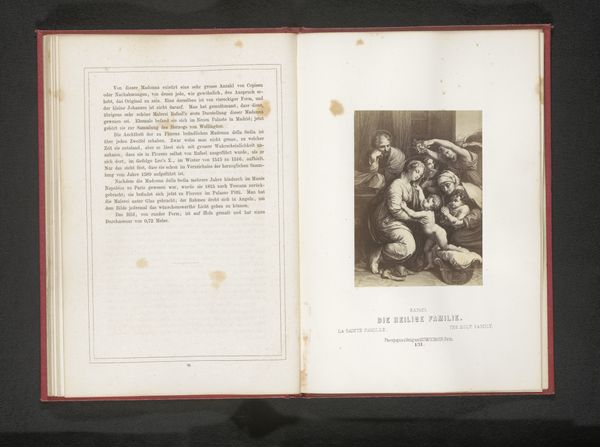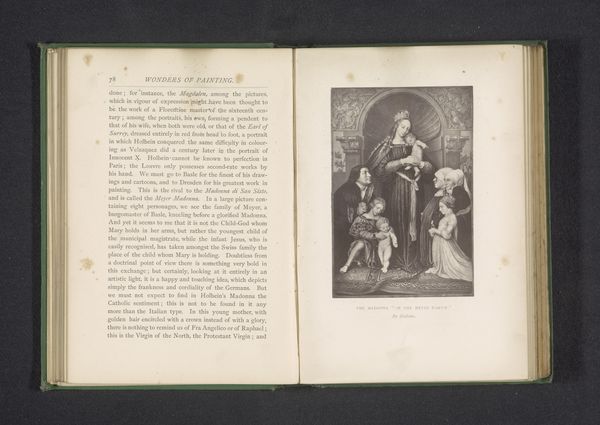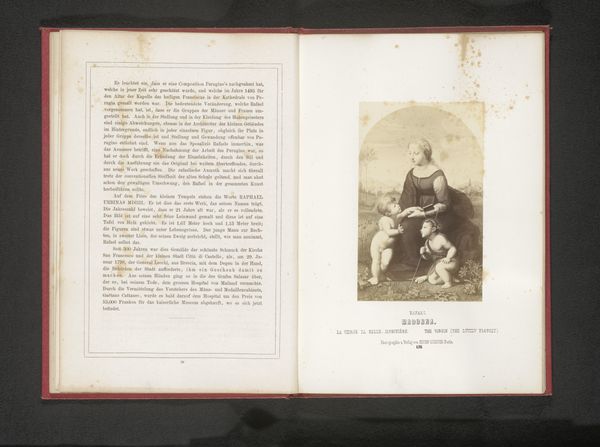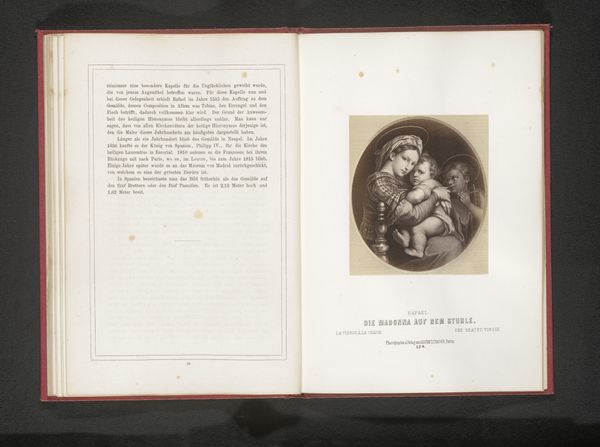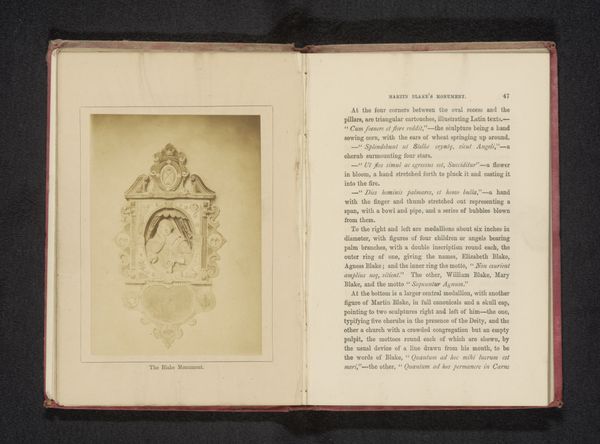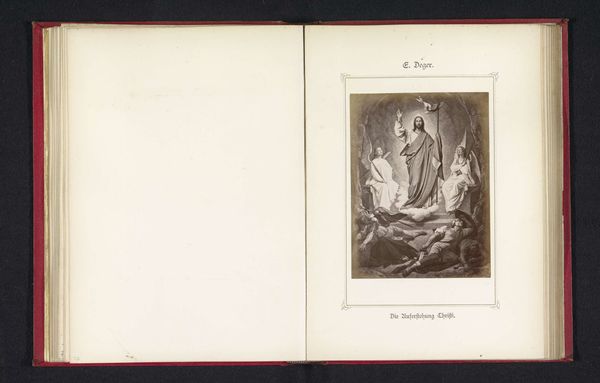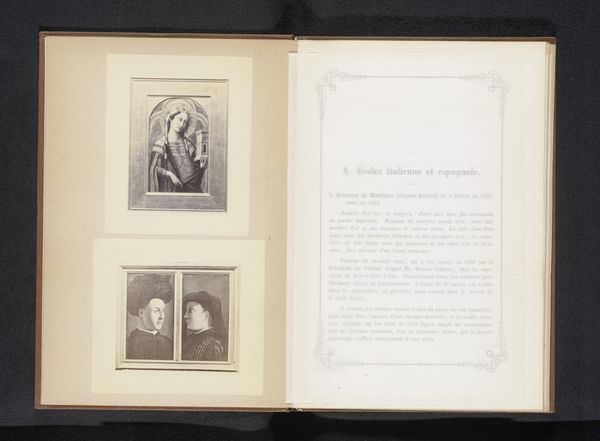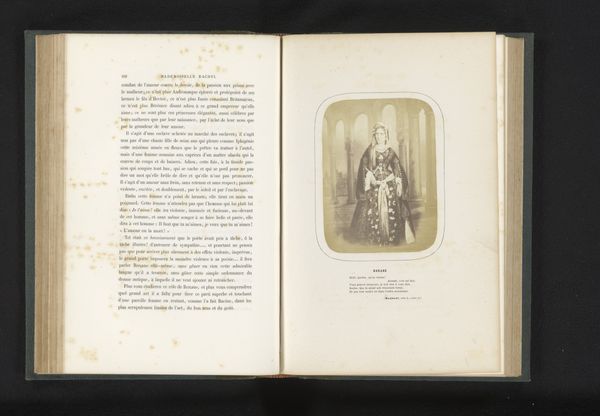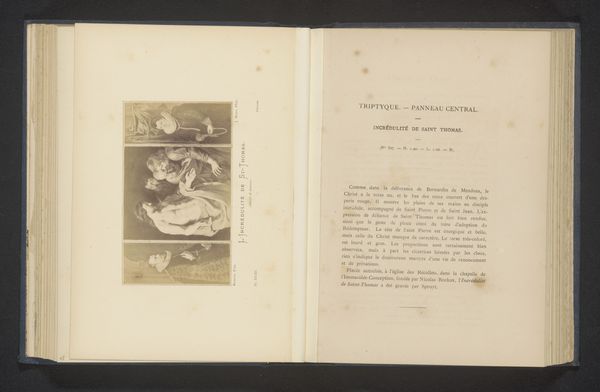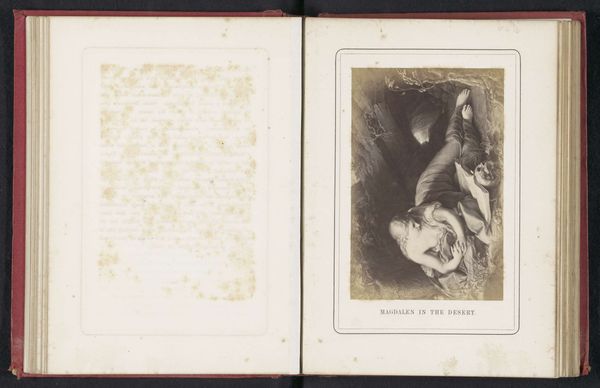
Fotoreproductie van een prent naar een schilderij, voorstellende de Sixtijnse Madonna before 1861
0:00
0:00
print, etching, paper, photography
#
portrait
# print
#
etching
#
paper
#
11_renaissance
#
photography
#
italian-renaissance
Dimensions: height 114 mm, width 85 mm
Copyright: Rijks Museum: Open Domain
Curator: Here we see a photo reproduction of an etching on paper, likely made before 1861 by Gustav Schauer, after Raphael's "Sistine Madonna". Editor: Immediately, I’m struck by the theatrical quality, the figures positioned as if on a stage, complete with drawn curtains in the background. The reproduction creates a melancholic yet hopeful mood. Curator: Indeed, that staged setting plays into how the original painting functions within its own specific cultural context. Raphael created this iconic work for the church of San Sisto in Piacenza. The Madonna, appearing to descend from the heavens, becomes an intercessor figure between the divine and the earthly. It makes you wonder about the politics and purpose of religious art back then and how this impacts how such art should be regarded and approached now. Editor: I completely agree, that concept of intersectionality is important here: the power dynamics implicit in representing this religious scene – particularly its focus on idealised femininity at the center— are especially significant. And the cherubs—those bottom figures—they've become kitsch, detached from their original religious function, used for sentimental decoration divorced from discussions around faith and power, gender and history. Curator: That speaks to how reproductions and popular culture can recontextualize an artwork entirely. This reproduction transforms Raphael’s intention, stripping away much of the grandeur and replacing it with a somewhat more accessible, perhaps domestic, feel. Editor: Precisely. Mass reproductions affect our understanding, even consumption, of imagery; who had access, who benefitted. Who created, and controlled that reproduction? What message were they hoping to distribute by sharing it? This specific photographic print is framed within a book and the history it represents is as complex and perhaps more impactful than the painting itself. Curator: Certainly, the layering of history is fascinating here—the original Renaissance painting, then this 19th-century photographic print, and now us, analyzing it in a completely different era. I find it humbling, thinking about the ever-evolving reception of art. Editor: It forces us to acknowledge that art's meaning is never static, always reshaped by cultural forces and changing interpretations of value. We just become new layers for it to bear.
Comments
No comments
Be the first to comment and join the conversation on the ultimate creative platform.
